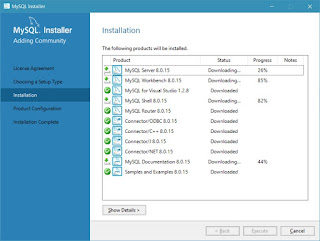I've spent the evening and early morning hours reading The Elements of Data Analytic Style - A guide for people who want to analyze data by Jeff Leek (This book is for sale at http://leanpub.com/datastyle), and wanted to post this amazing data analysis checklist here so that I may continually refer back to it.
The data analysis Checklist -- A way to evaluate the quality of a reported data analysis.
14.1 Answering the question
1. Did you specify the type of data analytic question (e.g.
exploration, association causality) before touching the
data?
2. Did you define the metric for success before beginning?
3. Did you understand the context for the question and
the scientific or business application?
4. Did you record the experimental design?
5. Did you consider whether the question could be answered with the available data?
14.2 Checking the data
1. Did you plot univariate and multivariate summaries of
the data?
2. Did you check for outliers?
3. Did you identify the missing data code?
2. Did you clearly identify the quantities of interest in
your model?
3. Did you consider potential confounders?
4. Did you identify and model potential sources of correlation such as measurements over time or space?
5. Did you calculate a measure of uncertainty for each
estimate on the scientific scale?
14.3 Tidying the data
1. Is each variable one column?
2. Is each observation one row?
3. Do different data types appear in each table?
4. Did you record the recipe for moving from raw to tidy
data?
5. Did you create a code book?
6. Did you record all parameters, units, and functions
applied to the data?
14.4 Exploratory analysis
1. Did you identify missing values?
2. Did you make univariate plots (histograms, density
plots, boxplots)?
3. Did you consider correlations between variables (scatterplots)?
4. Did you check the units of all data points to make sure
they are in the right range?
5. Did you try to identify any errors or miscoding of
variables?
6. Did you consider plotting on a log scale?
7. Would a scatterplot be more informative?
14.5 Inference
1. Did you identify what large population you are trying
to describe?
The data analysis checklist 89
2. Did you clearly identify the quantities of interest in
your model?
3. Did you consider potential confounders?
4. Did you identify and model potential sources of correlation such as measurements over time or space?
5. Did you calculate a measure of uncertainty for each
estimate on the scientific scale?
14.6 Prediction
1. Did you identify in advance your error measure?
2. Did you immediately split your data into training and
validation?
3. Did you use cross validation, resampling, or bootstrapping only on the training data?
4. Did you create features using only the training data?
5. Did you estimate parameters only on the training data?
6. Did you fix all features, parameters, and models before
applying to the validation data?
7. Did you apply only one final model to the validation
data and report the error rate?
14.7 Causality
1. Did you identify whether your study was randomized?
2. Did you identify potential reasons that causality may
not be appropriate such as confounders, missing data,
non-ignorable dropout, or unblinded experiments?
3. If not, did you avoid using language that would imply
cause and effect?
14.8 Written analyses
1. Did you describe the question of interest?
2. Did you describe the data set, experimental design, and
question you are answering?
3. Did you specify the type of data analytic question you
are answering?
4. Did you specify in clear notation the exact model you
are fitting?
5. Did you explain on the scale of interest what each
estimate and measure of uncertainty means?
6. Did you report a measure of uncertainty for each estimate on the scientific scale?
14.9 Figures
1. Does each figure communicate an important piece of
information or address a question of interest?
2. Do all your figures include plain language axis labels?
3. Is the font size large enough to read?
4. Does every figure have a detailed caption that explains
all axes, legends, and trends in the figure?
14.10 Presentations
1. Did you lead with a brief, understandable to everyone
statement of your problem?
2. Did you explain the data, measurement technology, and
experimental design before you explained your model?
The data analysis checklist 91
3. Did you explain the features you will use to model data
before you explain the model?
4. Did you make sure all legends and axes were legible
from the back of the room?
14.11 Reproducibility
1. Did you avoid doing calculations manually?
2. Did you create a script that reproduces all your analyses?
3. Did you save the raw and processed versions of your
data?
4. Did you record all versions of the software you used to
process the data?
5. Did you try to have someone else run your analysis
code to confirm they got the same answers?



No comments:
Post a Comment